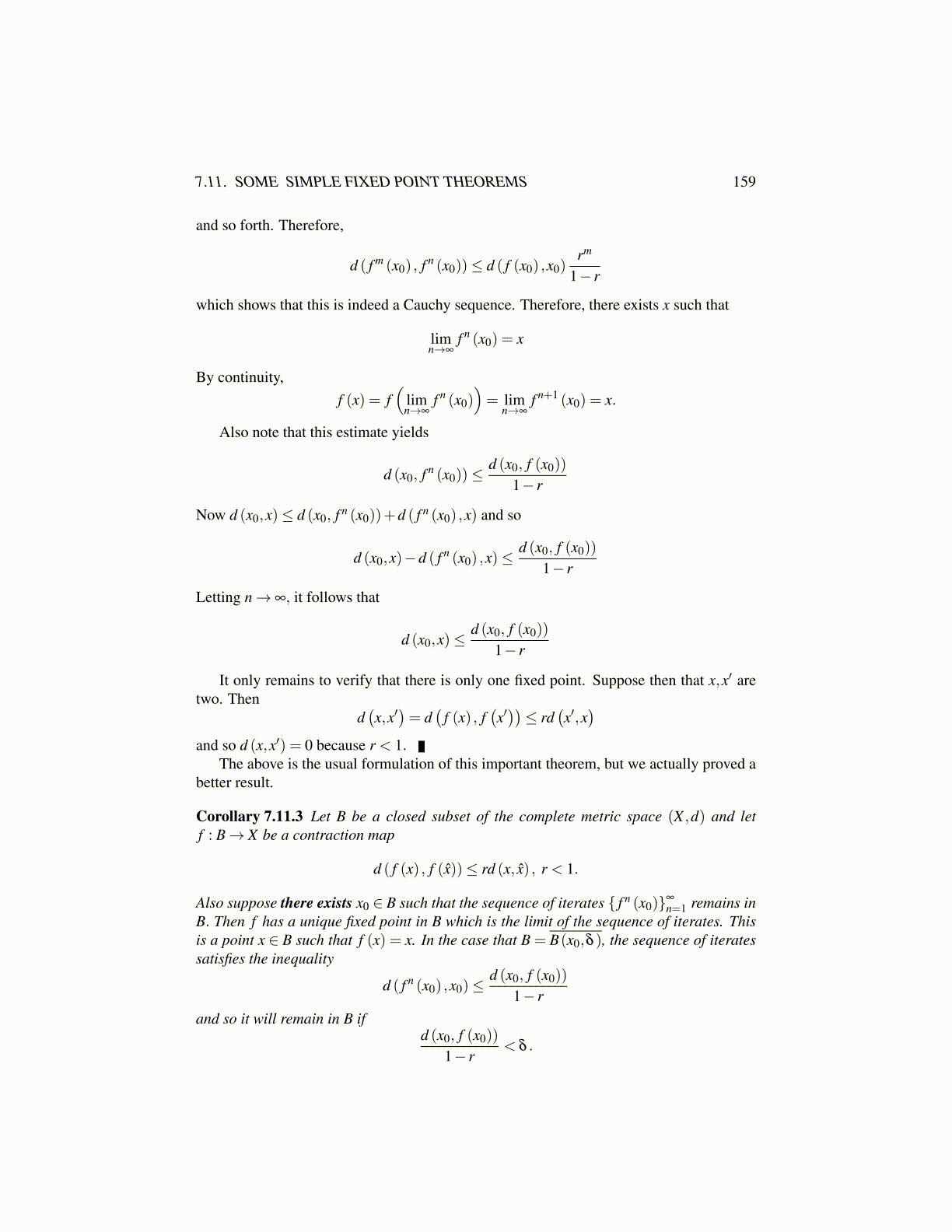
7.11. SOME SIMPLE FIXED POINT THEOREMS 159
and so forth. Therefore,
d ( f m (x0) , f n (x0))≤ d ( f (x0) ,x0)rm
1− r
which shows that this is indeed a Cauchy sequence. Therefore, there exists x such that
limn→∞
f n (x0) = x
By continuity,f (x) = f
(limn→∞
f n (x0))= lim
n→∞f n+1 (x0) = x.
Also note that this estimate yields
d (x0, f n (x0))≤d (x0, f (x0))
1− r
Now d (x0,x)≤ d (x0, f n (x0))+d ( f n (x0) ,x) and so
d (x0,x)−d ( f n (x0) ,x)≤d (x0, f (x0))
1− r
Letting n→ ∞, it follows that
d (x0,x)≤d (x0, f (x0))
1− r
It only remains to verify that there is only one fixed point. Suppose then that x,x′ aretwo. Then
d(x,x′)= d
(f (x) , f
(x′))≤ rd
(x′,x)
and so d (x,x′) = 0 because r < 1.The above is the usual formulation of this important theorem, but we actually proved a
better result.
Corollary 7.11.3 Let B be a closed subset of the complete metric space (X ,d) and letf : B→ X be a contraction map
d ( f (x) , f (x̂))≤ rd (x, x̂) , r < 1.
Also suppose there exists x0 ∈ B such that the sequence of iterates { f n (x0)}∞
n=1 remains inB. Then f has a unique fixed point in B which is the limit of the sequence of iterates. Thisis a point x ∈ B such that f (x) = x. In the case that B = B(x0,δ ), the sequence of iteratessatisfies the inequality
d ( f n (x0) ,x0)≤d (x0, f (x0))
1− rand so it will remain in B if
d (x0, f (x0))
1− r< δ .